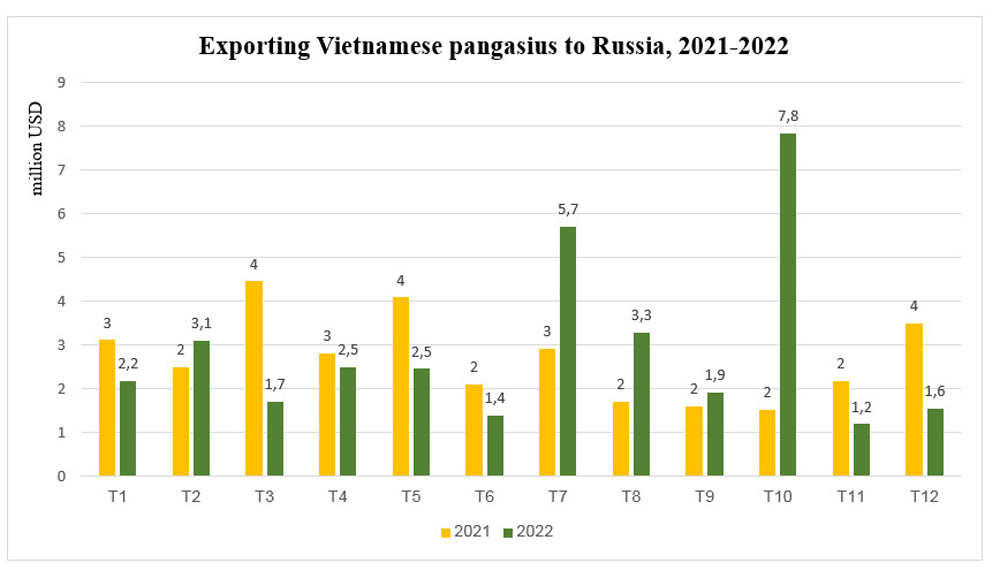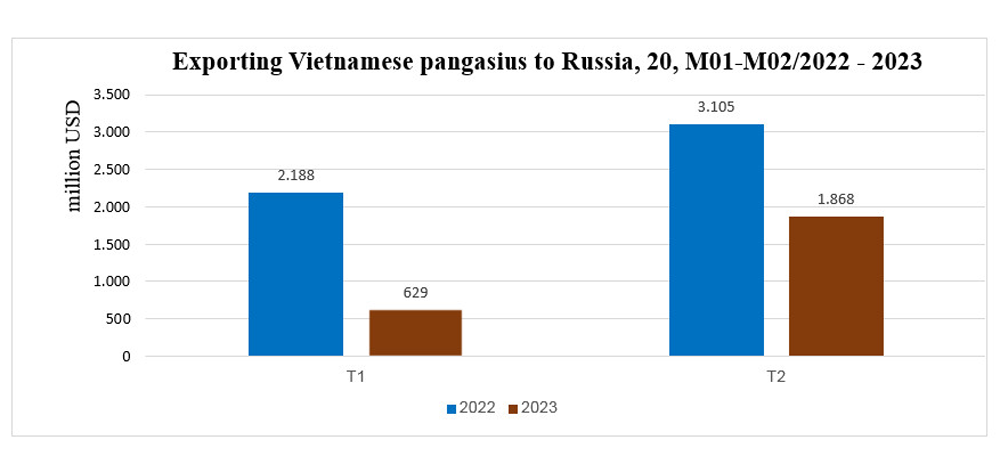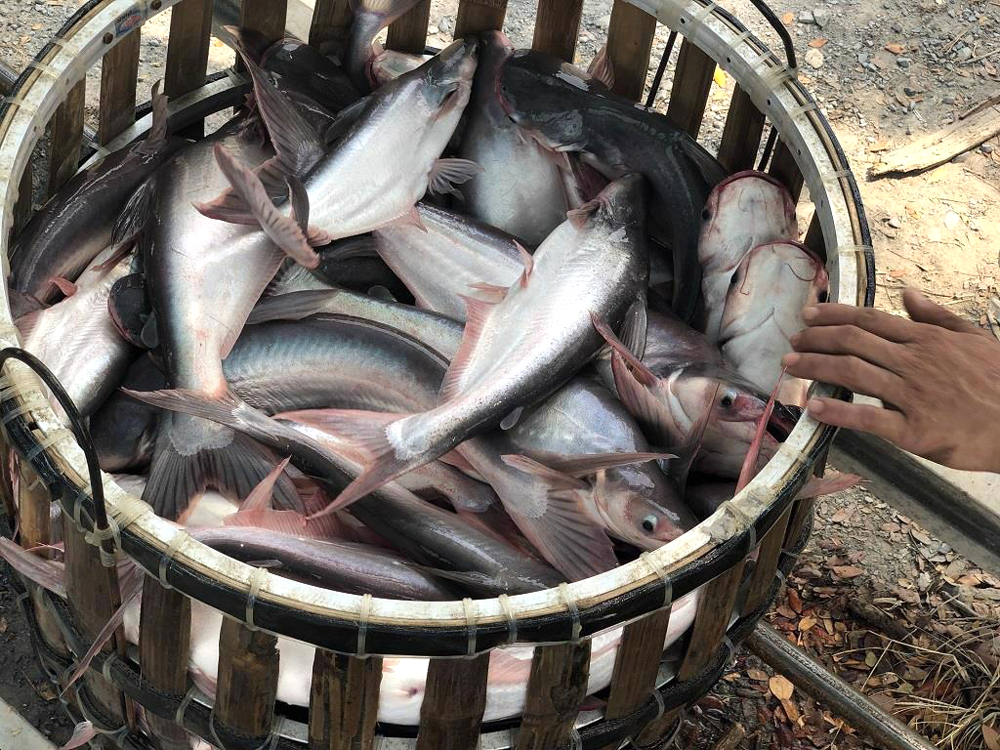Vietnam Seafood
Vietnam pangasius exports to Russia a year after the Russia-Ukraine war
In the first two months of 2023, Russia is among many markets with negative growth in imports of Vietnamese pangasius, due to the impact of inflation and a decrease in demand.
According to the trend, only a few markets kept positive growth in pangasius imports such as Germany, Saudi Arabia, and the UK, while most of the major markets decreased, including Russia.
In February 2023, pangasius exports to the Russian market reached nearly 2 million USD, down 40% over the same period last year (equivalent to 3 million USD) and accounted for 1% of the total value of Vietnamese pangasius to other markets. .
In the first two months of 2023, Vietnam’s pangasius to the Russian market reached nearly $2.5 million, down 53% compared to the same period in 2022 and accounted for 1.4% of the total value of Vietnamese pangasius exports to markets. The proportion of the Russian market in the first 2 months of this year increased higher than the same period last year (only 1%). Although pangasius decreased, the context of inflation reduced demand and decreased import prices, sales by the end of February are also a positive sign.


The conflict between Russia and Ukraine since the end of February 2022 has greatly affected world trade, including Vietnam, causing traffic congestion and difficult trade payments. Although the proportion of Vietnam’s seafood exports to these two countries is not large, the escalating tension also creates chain consequences, affecting the seafood exports of the countries. Therefore, in the period of March and April, 2022, Vietnam’s seafood exports to Russia stagnated, decreasing by 86% and 46% respectively.
When the war between Russia and Ukraine occurred, Russia was embargoed, Vietnamese goods exported to Russia were also delayed for 3 months, some orders had to be returned, businesses had to process goods. exist or seek to export to other markets. Currently 1 year after the war between Russia and Ukraine, Vietnamese pangasius to the Russian market is showing positive signs of recovery. From the end of 2022, Russia has accelerated the import of Vietnamese pangasius.
In the context of inflation, the Russian market is also not affected as much as Western countries. In addition, Russia is promoting seafood trade with other countries, including China, India and Bangladesh. Vietnamese seafood more or less also has to compete with other countries, especially China, on the Russian market. The Russian economy will be more dependent on China because of the common border. However, Vietnam is still the number one source of pangasius in Russia.
It is forecasted that in the following months, the volume of pangasius to Russia may increase slightly. However, the price of pangasius to this market will decrease compared to 2022, following the general trend. Moreover, Russia’s food price inflation is cooling down month by month, which has a negative impact on the prices of the country’s seafood products.
According to Russian statistics, from March 13 to March 19, the prices of frozen fish products were stable, sometimes decreasing. In the Far East, pollock prices fell 2.1% (95₽/kg), Pacific herring 3.2% (60₽/kg). Prices of Pacific cod and halibut remained at the level of last week – 220₽ and 70₽/kg. In the Northwest, Atlantic herring decreased by 3.1% (93₽/kg). The price of mackerel remains unchanged: 167₽/kg.
In the central regions, the price of capelin fell 3.4% to 85₽/kg. Atlantic herring fell 1.7% to 113₽/kg. Pollock prices remained at the level of last week – 118₽/kg.
(Source: https://seafood.vasep.com.vn/)



 Tiếng Việt
Tiếng Việt